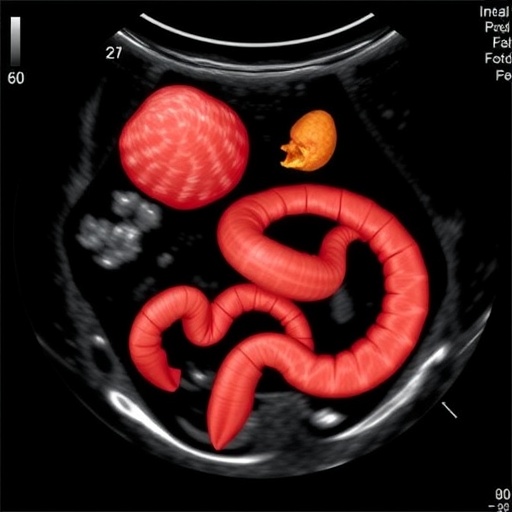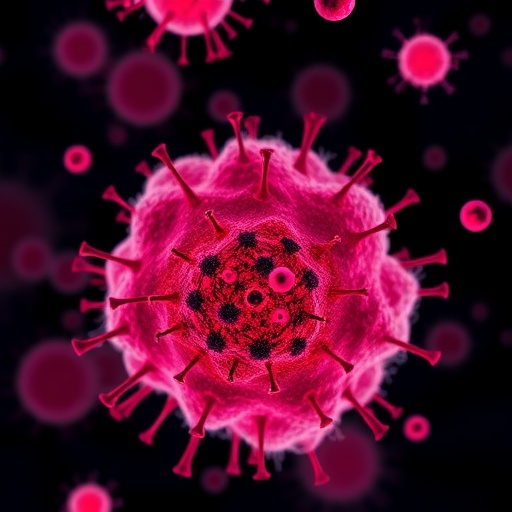In recent years, the field of pediatric radiology has witnessed significant advancements in the diagnostic protocols for various neonatal conditions. Among these, necrotizing enterocolitis (NEC) has emerged as a critical focus due to its high morbidity and mortality rates in infants, particularly those born prematurely. A novel study led by researchers Hegedus, Essex, and Vincent proposes a standardized universal protocol aimed at integrating adjunct abdominal ultrasound to enhance the diagnostic accuracy for suspected cases of NEC.
Necrotizing enterocolitis is a severe gastrointestinal disease affecting newborns, particularly preterm infants. It is characterized by inflammation and necrosis of the intestinal wall, leading to serious complications. The timely diagnosis is crucial for improving clinical outcomes, as the condition can deteriorate rapidly. Traditional diagnostic methods, including clinical assessment and plain abdominal radiography, have significant limitations, particularly in their ability to identify the extent of bowel injury.
The introduction of ultrasound as a complementary diagnostic tool marks a paradigm shift in the approach to diagnosing NEC. Ultrasound is non-invasive, does not involve radiation exposure, and can provide real-time visualization of abdominal structures. Its application could facilitate earlier detection of NEC, which is critical for initiating appropriate medical and surgical interventions.
In this groundbreaking paper published in Pediatr Radiol, the authors meticulously outline their proposed standardized protocol. The protocol emphasizes the systematic use of abdominal ultrasound at the point of diagnosis, making it a core component of the evaluation process for infants suspected of having NEC. The authors detail the specific ultrasound imaging techniques, anatomical landmarks to focus on, and the interpretative criteria vital for accurate diagnosis.
One of the key advantages of this standardized protocol is its universality. By providing clear and concise guidelines, the researchers aim to eliminate variability in ultrasound use across different healthcare settings. This could lead to a more consistent approach to diagnosing NEC, ensuring that all neonates receive the same level of care regardless of where they are treated.
The study includes a critical analysis of existing literature on abdominal ultrasound use in NEC diagnosis. The authors synthesize findings from various clinical settings, highlighting both the successes and challenges experienced by practitioners in employing this modality. The comprehensive review underscores the need for standardized practices in pediatric radiology, emphasizing that variations in techniques can lead to discrepancies in diagnostic outcomes.
Through interviews and surveys with experienced pediatric radiologists and neonatologists, the study gathers insights on the practical implications of adopting this ultrasound protocol. Clinicians express optimism about its potential to enhance diagnostic confidence, particularly in ambiguous cases where clinical signs may not align with radiographic findings. The qualitative data gathered strengthen the call for broad adoption of the protocol.
An essential aspect of the proposed protocol is the training that would accompany its implementation. The authors stress the importance of ensuring that all clinicians involved in the diagnosis of NEC are adequately trained in the use of abdominal ultrasound techniques. This training would not only enhance skills but also foster interdisciplinary collaboration among neonatologists, radiologists, and surgical teams.
In addition to improving diagnostic accuracy, the proposed protocol aims to address some inherent limitations of current diagnostic approaches. For instance, traditional radiography can sometimes produce false negatives or lead to delayed diagnoses due to reliance on a limited set of clinical indicators. The incorporation of ultrasound could mitigate these issues, providing a more nuanced understanding of gastrointestinal status in neonates.
There’s a growing recognition of the importance of a multipronged approach to neonatal care. By integrating abdominal ultrasound into routine assessments for NEC, the medical community could shift towards more proactive management strategies. Early diagnosis would allow for timely therapeutic interventions—an ambition that could significantly reduce the incidence of severe complications and improve overall survival rates in affected infants.
As the study suggests, the adoption of a standardized protocol for abdominal ultrasound in diagnosing NEC presents a valuable opportunity to enhance neonatal healthcare. If embraced by healthcare institutions, the protocol could set a new standard of care, ultimately leading to better patient outcomes. The authors call upon healthcare policymakers to recognize the potential benefits of this protocol and support its implementation through training and resource allocation.
As we look ahead, the implications of this research extend beyond individual clinical practices. Standardizing ultrasound use for NEC diagnosis could position the pediatric population towards a future of more rigorous standards in medical imaging. The healthcare field constantly evolves, and protocols such as this represent crucial steps towards achieving enhanced care for vulnerable populations.
In summary, the standardized universal protocol proposed by Hegedus and colleagues represents a significant advancement in the pursuit of effective diagnostic strategies for necrotizing enterocolitis. By emphasizing the role of abdominal ultrasound in initial assessments, the research contributes to a dialogue aimed at improving clinical practices and, ultimately, patient outcomes. It’s clear that such innovations are not just about integrating technology into healthcare; they represent a commitment to enhancing the safety and effectiveness of medical care for our most vulnerable patients.
This comprehensive study informs clinicians and healthcare providers about the latest advancements in neonatal care, urging them to consider the broader implications of adopting systematic approaches to complex health challenges such as NEC.
Subject of Research: Use of adjunct abdominal ultrasound in diagnosing necrotizing enterocolitis.
Article Title: A standardized universal protocol for using adjunct abdominal ultrasound at the time of diagnosis for suspected necrotizing enterocolitis.
Article References:
Hegedus, C., Essex, C., Vincent, K. et al. A standardized universal protocol for using adjunct abdominal ultrasound at the time of diagnosis for suspected necrotizing enterocolitis. Pediatr Radiol (2025). https://doi.org/10.1007/s00247-025-06408-x
Image Credits: AI Generated
DOI: https://doi.org/10.1007/s00247-025-06408-x
Keywords: Necrotizing enterocolitis, abdominal ultrasound, pediatric radiology, neonatal care, diagnosis, standardized protocol.
Tags: clinical outcomes in NECearly detection of necrotizing enterocolitisgastrointestinal diseases in newbornsimproving NEC management strategieslimitations of traditional diagnosticsnecrotizing enterocolitis diagnosisnon-invasive diagnostic techniquespediatric radiology advancementspreterm infant healthreal-time abdominal ultrasoundstandardized diagnostic protocolsultrasound in neonatal care





